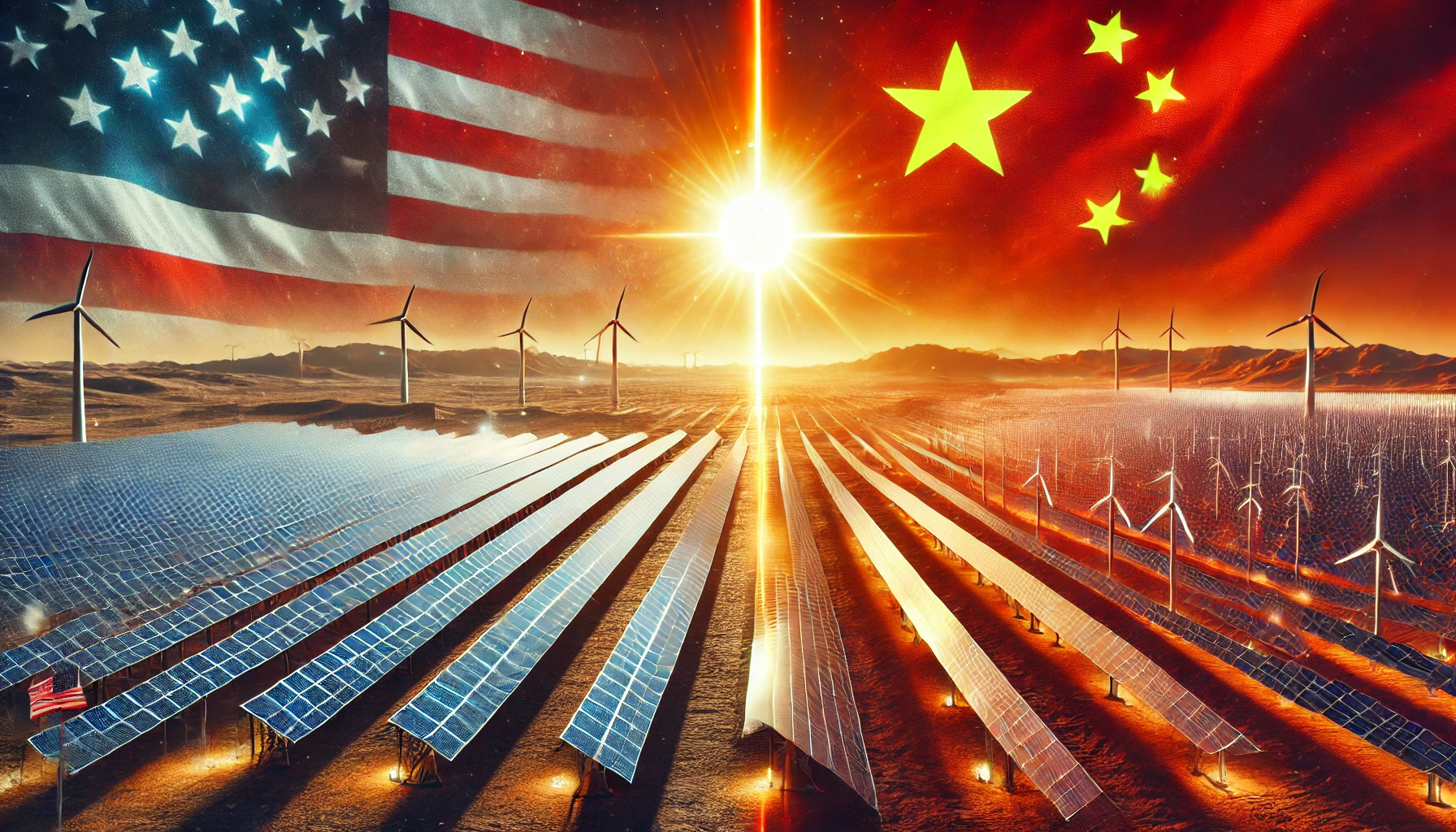
Solar power has exploded globally in the past decade, and the U.S. and China are two of the biggest players. But how do they really compare? From installed capacity and manufacturing dominance to government support and market share, this deep dive breaks it all down — backed by up-to-date data and insights from industry leaders. This is for solar enthusiasts, investors, and anyone who wants to understand the current landscape of global solar power.
1. Installed Solar Capacity: China Is Pulling Ahead Fast
Installed Capacity Numbers
Back in 2015, China had around 43 GW of solar capacity, while the U.S. had just 25 GW. By 2020, China had surged ahead to 254 GW, compared to the U.S. at 95 GW. As of 2023, China’s total installed solar capacity reached a staggering 609 GW, while the U.S. had about 129 GW (AC) or roughly 177 GW (DC).
📌 Source: International Energy Agency (IEA) – Renewables 2023
That means China has nearly 5 times more solar power installed than the U.S.
Electricity Generation Comparison
China’s solar farms generated about 584 TWh in 2023, while the U.S. generated 238 TWh from solar. Despite the U.S. having slightly better solar efficiency (due to sun-rich states), China’s massive scale delivers more total output.
📌 Source: U.S. Energy Information Administration – Monthly Energy Review
Milestones
- China surpassed 100 GW in 2017
- China exceeded 600 GW by 2023
- U.S. reached 100 GW in 2021
- U.S. expected to hit 150–160 GW by 2025
2023 Growth Numbers
- China added 216 GW of new solar
- U.S. added 32.4 GW (a new record)
📌 Source: SEIA/Wood Mackenzie – U.S. Solar Market Insight Q4 2023
At a Glance:
| Year | U.S. (GW) | China (GW) |
|---|---|---|
| 2015 | 25 | 43 |
| 2020 | 95 | 254 |
| 2023 | 129 (AC) | 609 |
2. Investment in Solar: China Is Spending Billions More
China leads with massive public and private investment. In 2022, China invested $164 billion into solar energy projects — more than 3× what the U.S. spent on all renewables.
📌 Source: BloombergNEF – Energy Transition Investment Trends 2023
In 2023, China raised the bar again:
- $107 billion into new solar generation
- $131 billion into solar manufacturing capacity
📌 Source: Carbon Brief – China’s Clean Energy Investment
Meanwhile, U.S. investment hit about $70 billion in 2023, thanks to the Inflation Reduction Act (IRA), but still falls short of China’s scale.
3. Solar Manufacturing: China Owns the Supply Chain
China’s Dominance
China produces over 80% of the world’s solar panels — including wafers, cells, and modules. Their manufacturing capacity exceeds 500 GW/year and continues to rise.
📌 Source: IEA – Solar PV Global Supply Chains
In 2023, Chinese firms like LONGi, JinkoSolar, Trina, and JA Solar each shipped 40–65 GW of panels — more than the entire U.S. combined.
U.S. Catching Up, Slowly
The U.S. had less than 7 GW/year of module manufacturing in 2022, but thanks to IRA incentives, that’s now expanding. Over 50 GW/year of capacity is expected by 2025 — but much of it is still under construction or just starting production.
📌 Source: SEIA – National Solar Jobs Census 2023
Even in 2024, China is still producing 10× to 15× more solar equipment than the U.S.
4. Government Policy: Both Active, but China Went Big Earlier
China’s Approach
Since the 2010s, China has poured state support into solar via:
- Feed-in tariffs
- Mandated solar targets
- Low-cost financing
- Strategic “five-year plans”
China’s goal to hit 1,200 GW of renewables by 2030 is expected to be reached five years early, by 2025.
📌 Source: China’s National Energy Administration (NEA) via Reuters
U.S. Approach
The U.S. relied mostly on tax credits until 2022. The Investment Tax Credit (ITC) and state-level net metering helped rooftop solar grow. But the IRA supercharged federal support with:
- 30% ITC extension
- New manufacturing tax credits
- Direct project grants and loans
📌 Source: White House Clean Energy Fact Sheet
The IRA is a game-changer — but China has a 10-year head start.
5. Global Market Share: China Exports, U.S. Imports
China isn’t just building for itself. It’s the world’s largest exporter of solar panels, shipping over 100 GW of PV modules in 2022 alone.
📌 Source: IEA – PV Supply Chains
Meanwhile, the U.S. imported about 29 GW in 2022 — most of it from Asia. The U.S. exports only a fraction of what it imports, and most panels installed in the U.S. still come from overseas.
6. Growth Rate: Both Growing, But China’s Numbers Are Insane
In 2023, China installed over 216 GW of new solar. That’s 6–7× more than the U.S. added (32.4 GW).
📌 Source: Carbon Brief – China Energy 2023
China’s 2023 growth rate was 55%. The U.S.? About 22%.
And in terms of total generation share:
- China: ~6.2% of national electricity
- U.S.: ~5–6%, depending on state
Solar is growing fast in both countries — but China’s pace and volume remain unmatched.
7. Leading Companies: Titans vs. Innovators
Top Chinese Firms:
- LONGi Green Energy – Global leader in mono-silicon panels
- JinkoSolar, Trina Solar, JA Solar – Mass-producing silicon modules
- Huawei, Sungrow – Top solar inverter brands
Top U.S. Firms:
- First Solar – Thin-film leader, only major U.S. manufacturer in top 10
- Tesla Energy – Solar roofs, home batteries
- Sunrun / Sunnova – Residential installers
- Enphase – Global leader in microinverters
- NextEra – Massive solar developer, utility-scale focus
📌 Source: PV Tech – Top Solar Module Suppliers
U.S. firms shine in innovation, tech, and project development, while Chinese firms dominate mass production.
Final Take: Is the U.S. Falling Behind in Solar?
Yes — at least for now.
| Metric | China | U.S. |
|---|---|---|
| Installed Capacity | 609 GW | 129 GW (AC) |
| 2023 Additions | 216 GW | 32.4 GW |
| Annual Investment | $100–150B | ~$70B |
| Manufacturing Share | 80%+ of global | <5% |
| Export Volume | World’s largest | Net importer |
The U.S. is ramping up, especially with help from the IRA. But China is years ahead, with far more installed power, investment, manufacturing, and export clout.
For solar investors, China’s influence will shape global pricing, supply chains, and innovation. But for those betting on U.S. growth, this moment — with unprecedented federal backing — might be the turning point.






